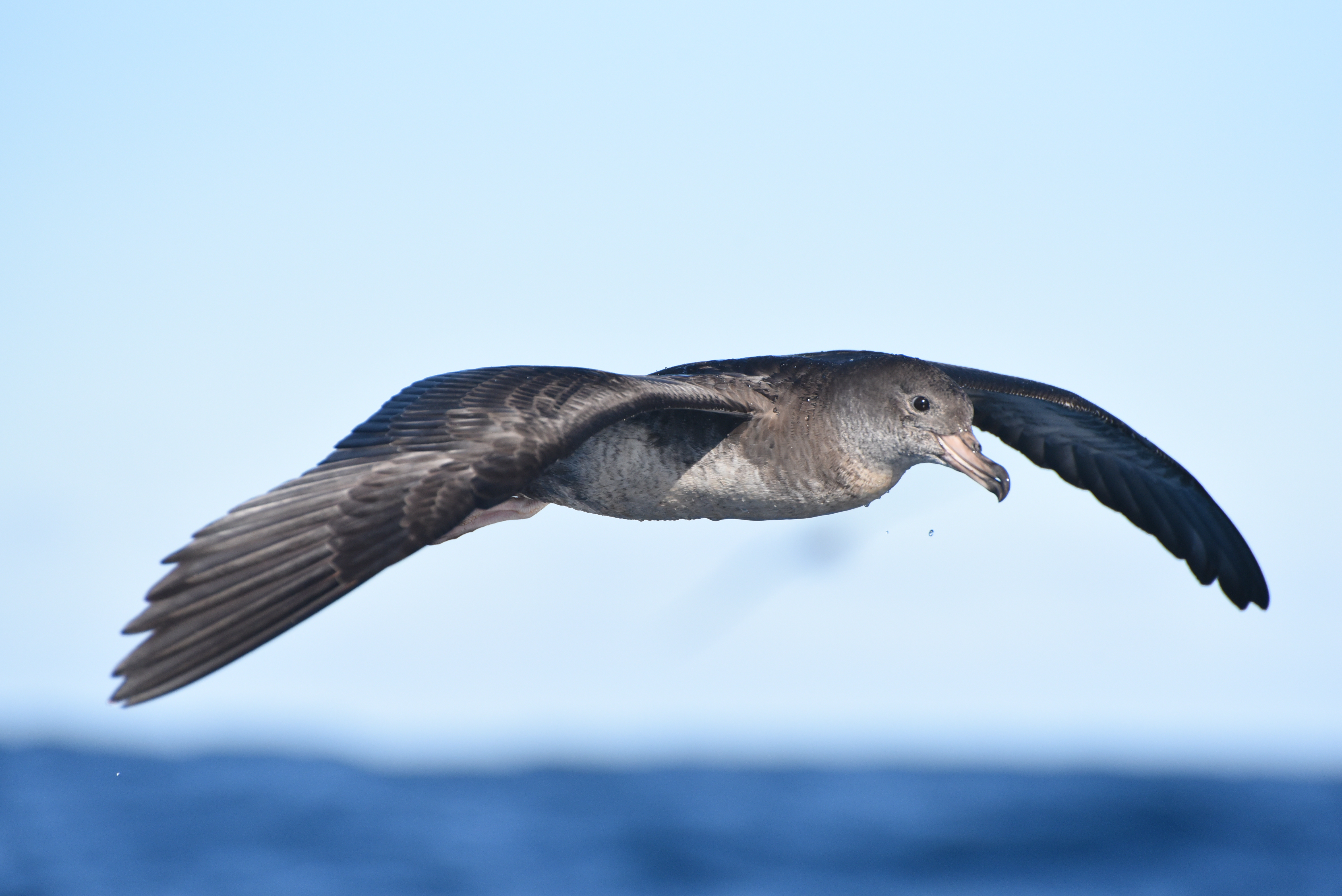 An ACAP-listed and Critically Endangered Balearic Shearwater Puffinus mauretanicus glides over a calm sea; photograph by ‘Pep’ Arcos
An ACAP-listed and Critically Endangered Balearic Shearwater Puffinus mauretanicus glides over a calm sea; photograph by ‘Pep’ Arcos
Joan Ferrer Obiol (Departament de Genètica, Microbiologia i Estadística, Universitat de Barcelona, Spain) and colleagues have published open access in the Journal of Biogeography on the biogeography and the evolution of Ardenna, Calonectris and Puffinus shearwaters, a taxonomic group that includes two ACAP-listed species.
The paper’s abstract follows:
“Aim
Palaeoceanographic changes can act as drivers of diversification and speciation, even in highly mobile marine organisms. Shearwaters are a group of globally distributed and highly mobile pelagic seabirds. Despite a recent well-resolved phylogeny, shearwaters have controversial species limits, and show periods of both slow and rapid diversification. Here, we explore the role of palaeoceanographic changes on shearwaters' diversification and speciation. We investigate shearwater biogeography and the evolution of a key phenotypic trait, body size, and we assess the validity of their current taxonomy.
Location
Worldwide.
Taxa
Shearwaters (Order Procellariiformes, Family Procellariidae, Genera Ardenna, Calonectris and Puffinus).
Methods
e generated genomic (ddRAD) data to infer a time-calibrated species tree for the shearwaters. We estimated ancestral ranges and evaluated the roles of founder events, vicariance and surface ocean currents in driving diversification. We performed phylogenetic generalised least squares to identify potential predictors of variability in body size along the phylogeny. To assess the validity of the current taxonomy, we analysed genomic patterns of recent shared ancestry and differentiation among shearwater taxa.
Results
We identified a period of high dispersal and rapid speciation during the Late Pliocene–early Pleistocene. Species dispersal appears to be favoured by surface ocean currents, and founder events are supported as the main mode of speciation in these highly mobile pelagic seabirds. Body mass shows significant associations with life strategies and local conditions. The current taxonomy shows some incongruences with the patterns of genomic divergence.
Main Conclusions
A reduction of neritic areas during the Pliocene seems to have driven global extinctions of shearwater species, followed by a subsequent burst of speciation and dispersal probably promoted by Plio-Pleistocene climatic shifts. Our findings extend our understanding on the drivers of speciation and dispersal of highly mobile pelagic seabirds and shed new light on the important role of palaeoceanographic events.”
An ACAP-listed and Vulnerable Pink-footed Shearwater Ardenna creatopus at sea; photograph by Peter Hodum
Reference:
Ferrer Obiol, J., James, H.F., Chesser, R.T., Bretagnolle, V., González-Solís, J., Rozas, J., Welch, A.J. & Riutort, M. 2021. Palaeoceanographic changes in the late Pliocene promoted rapid diversification in pelagic seabirds. Journal of Biogeography doi.org/10.1111/jbi.14291.
John Cooper, ACAP Information Officer, 21 December 2021

 Español
Español  English
English  Français
Français 